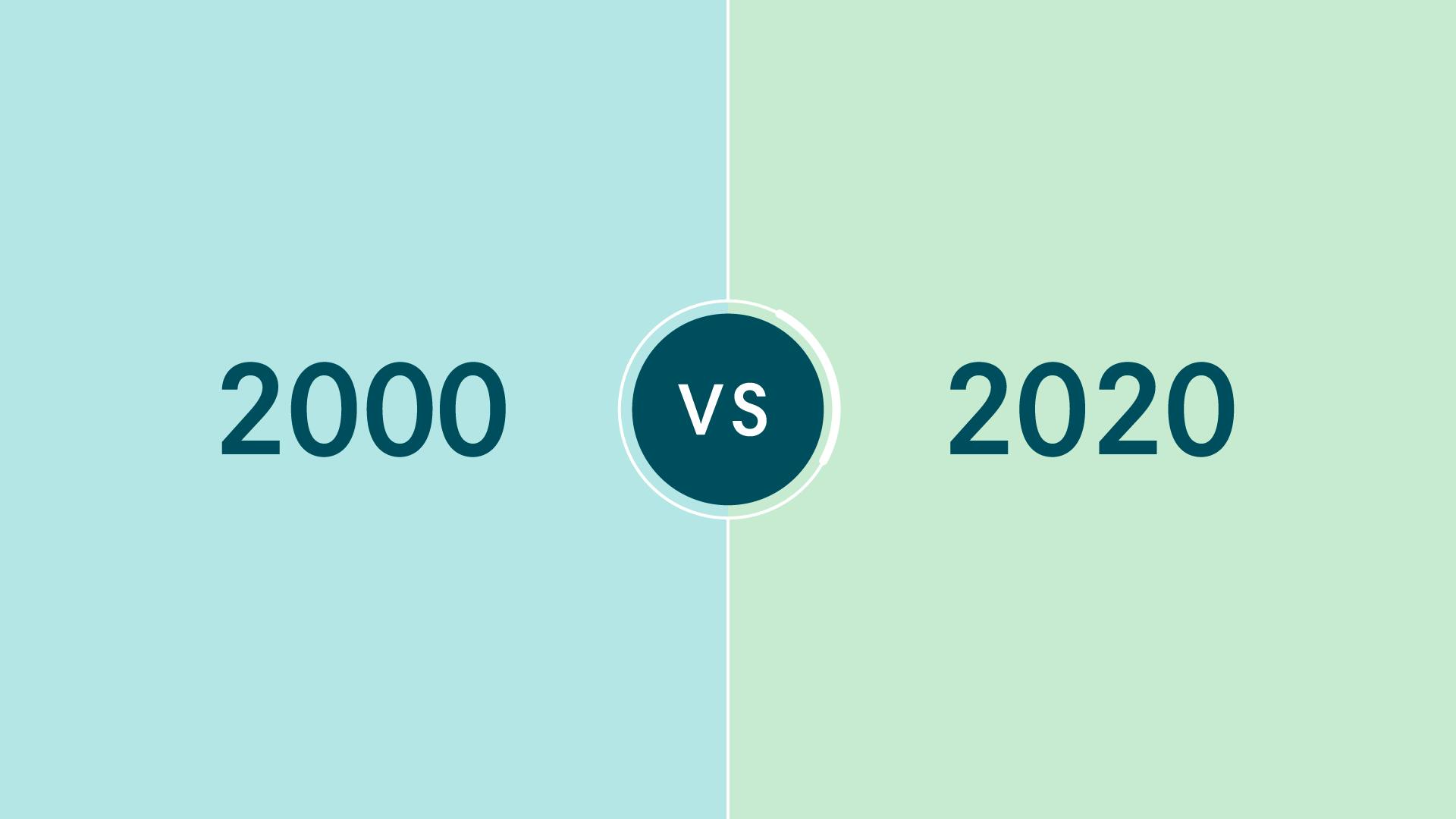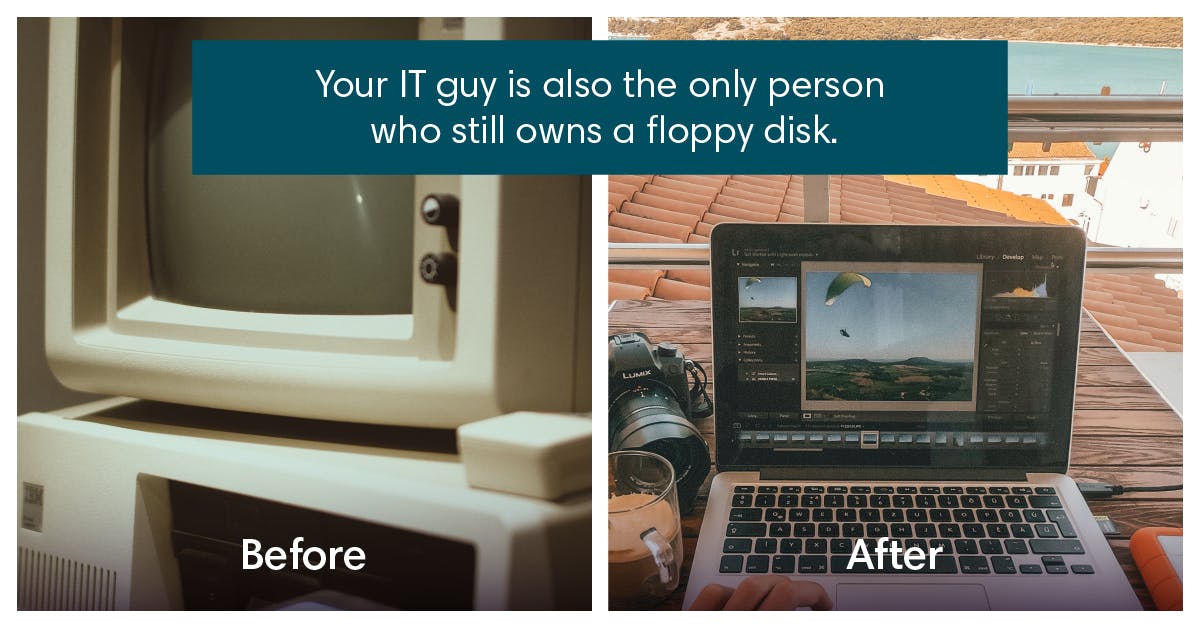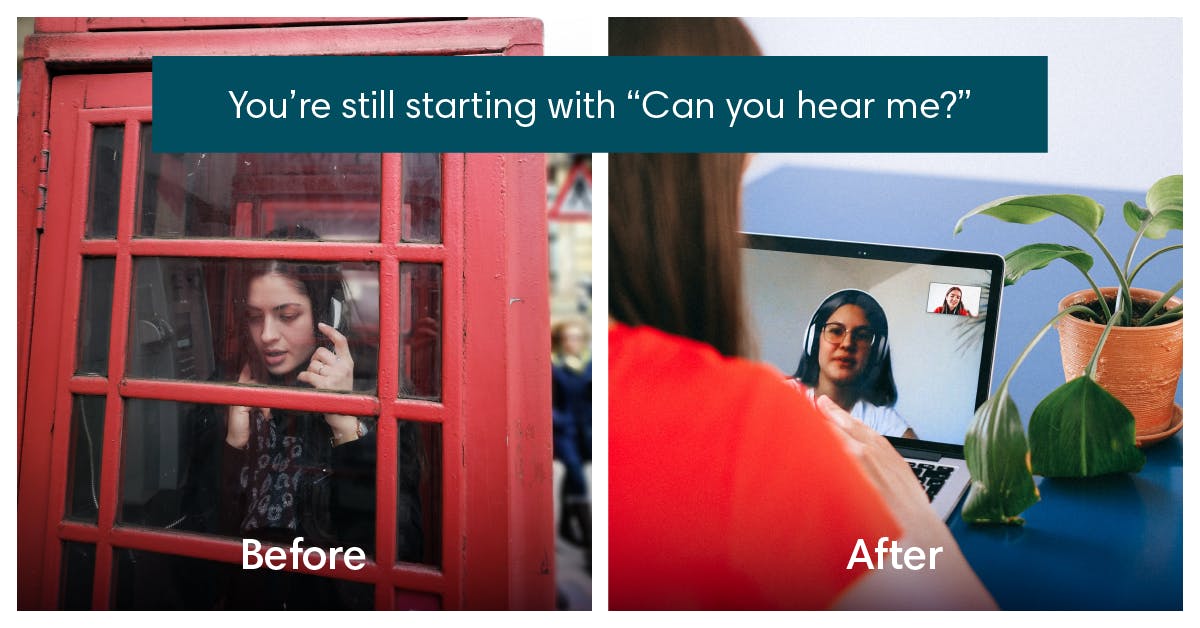
That’s right, we're talking about the final hours before the dreaded Y2K bug took effect and changed the course of the future forever. Okay, maybe this future didn’t come to be, but at the time it’s what it seemed like everyone was expecting.
Instead of technological downfall, the Earth simply completed its revolution and we officially entered the year 2000. Thinking back, there was almost nothing of particular note in terms of digital degradation. In fact, contrary to what some predicted, we only began to further increase our reliance on technology.
Looking back to 20 years ago
In 2000, the majority of those with internet access were connected via dial-up so the idea of communication through video was still only a reality in sci-fi flicks. Most internet users would instead focus on instant messaging platforms such as AIM or MSN Messenger and e-mail was still in a young enough phase that it could be romanticized (like in the 1998 film You’ve Got Mail).
Hot items for the turn of the millennium were mobile phones like the indestructible Nokia, the PlayStation 2 (fresh off the 90s success of the original PlayStation), and USB flash drives to usher in a new era of physical data sharing and replace the previous medium - floppy disks.

Need to research something? If so, you’d head to your local library or maybe take a look at an encyclopedia because “valid” information couldn’t be found on the internet at the time. Industries such as finance, legal, and medical would all shun internet use as something that was a fun fad, but not something to be taken seriously and not something that would last.
Despite this adolescent stage, there was little doubt among many that the internet and its connection to services, communication, and information was primed to take off in a big way.
While there were countless different factors that triggered the future adaptation and absorption of online statuses, it’s hard to argue that anything was quite as impactful as the introduction of smartphones and social media.
The importance of online and offline identities
Social media changed people’s lives in a massive way. No longer do you exist only in person, but for most of us, our online identity is just as equally important to manage and maintain. Something that started as just a simple way to stay connected with friends and families morphed into a juggernaut that could do anything from feed you news from across the world to keeping you updated with lives of celebrities – directly from the celebrities themselves.
With the introduction of the iPhone in 2007, the separation between online and offline began to blur even more. “Inaccessible” became a thing of the past with data coverage widening within the majority of the more technologically modern countries.
Of course, this new reality would then go on to transform the way we live and work entirely. With network access, working from home, a café, another city, another country, etc., all suddenly became not only possible, but practical. We take advantage of group meetings from anywhere we are, meet deadlines mid-flight, and commit code in our pajamas. And no other industry felt this more than the tech-industry – the leading figures in the trade could easily share knowledge quickly across several platforms.

With home offices taking over (something that is more relatable today than ever), an increasing amount of stress began to be put on a company’s ability to handle security and protection of intellectual data. If you’re constantly sharing data between employees through an online network, it can become easy to forego security on everything. These tiny lapses are exactly what forms the cracks in security that result in data leaks.
Private company security is just one element. There’s also the transformation of crucial services such as banking and health. What was once information stored in file cabinets with limited outside access, suddenly became data stored on servers with sometimes outdated and questionable amounts of security. The reality that people’s medical and financial information could be stolen became a very real fear.
Identity verification, trust, and where Veriff steps in
While many of us can nostalgically look back at our first form of identification, be that a passport, driver’s license or some other form of paper document, the reality is that this type of document is no longer sustainable. Since the evolution of technology happens faster each year, staying ahead of the curve and adapting is paramount.
For this evolution to happen requires trust in the services we use. Bringing trust back to the internet and sustaining that trust has been Veriff’s goal from the start. Most of us are fully aware of the anonymity that the internet can provide, and while there are benefits to this there are also significant drawbacks when it comes to using services that need certainty that a person is who they say they are.
Lastly, but just as important, we need to ensure that the system of verification is not only foolproof, but innovative and easy to use. Veriff’s dedication to both is what makes their solution important both in the present and in years to come.


